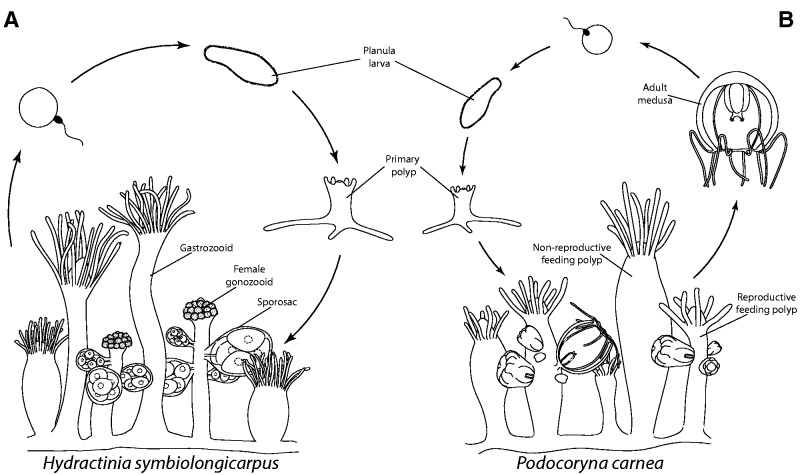Fig. 1.—
Illustration of hydrozoan life cycles. (A) In the life cycle of Hydractinia symbiolongicarpus, gonophores develop into sporosacs that lack all medusa features and remain attached to the colony on specialized reproductive polyps called gonozooids. Sexual reproduction occurs in the water column after the sporosacs release their gametes. Sexual reproduction results in a planula larva that eventually settles onto a suitable substrate and metamorphoses into a primary polyp. This polyp will asexually produce other polyps to form a colony and the cycle repeats. (B) Podocoryna carnea’s life cycle is similar to that of H. symbiolongicarpus except that medusae asexually bud from reproductive polyps and detach from the colony to sexually reproduce in the water column.

